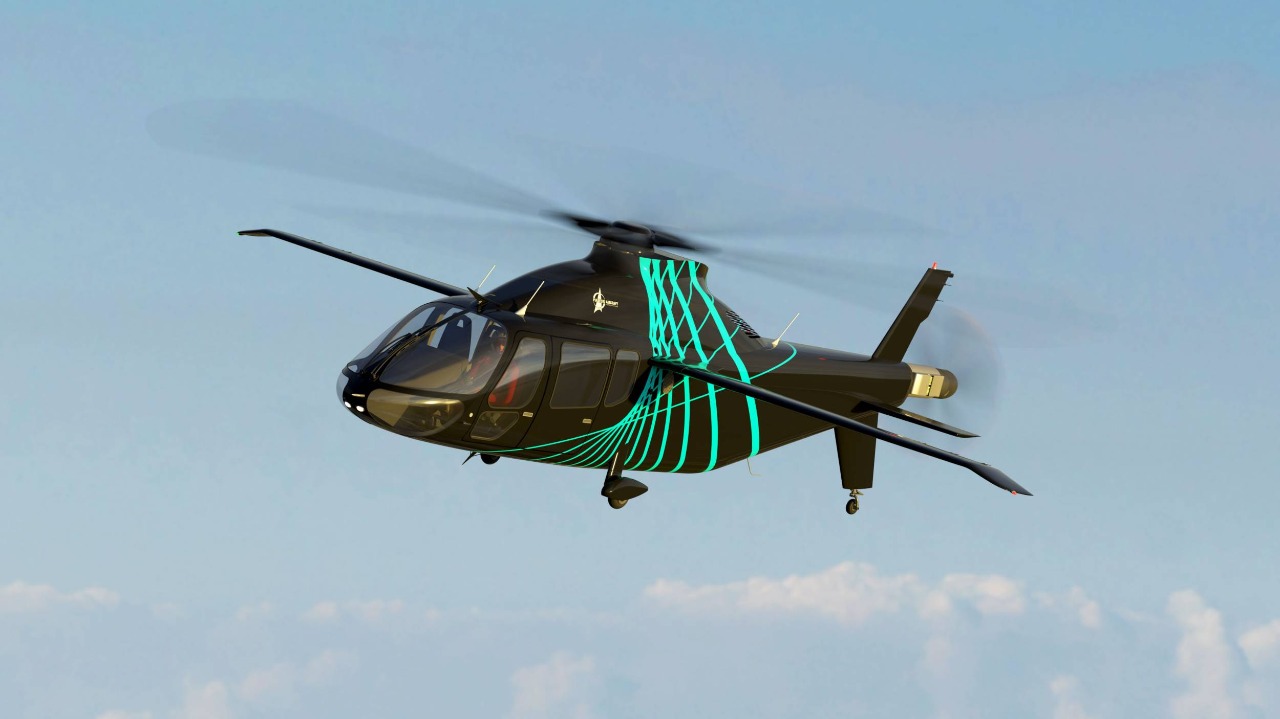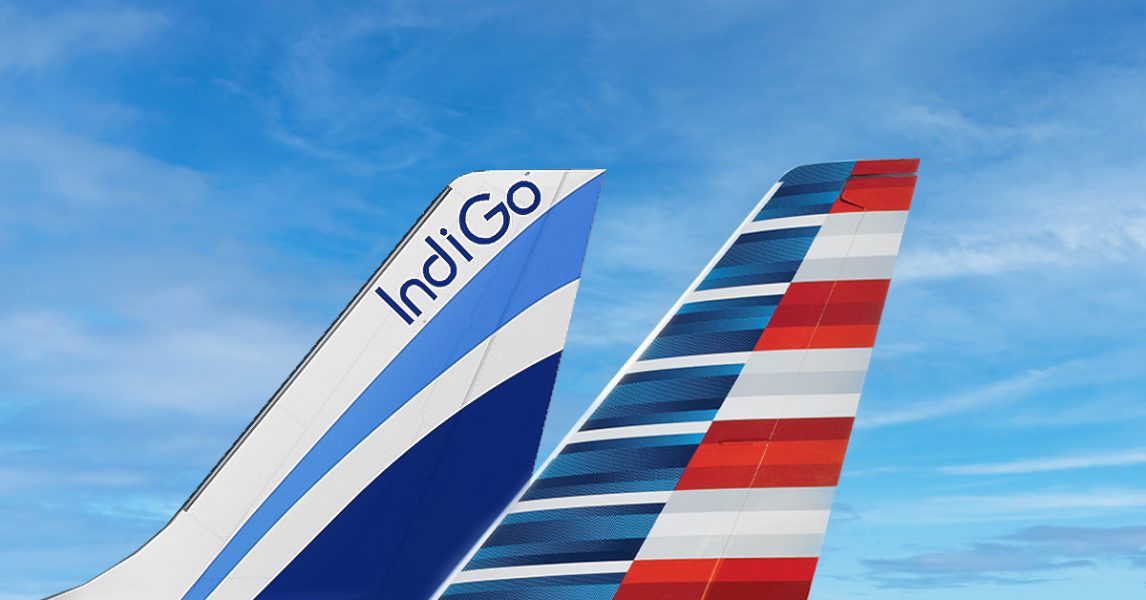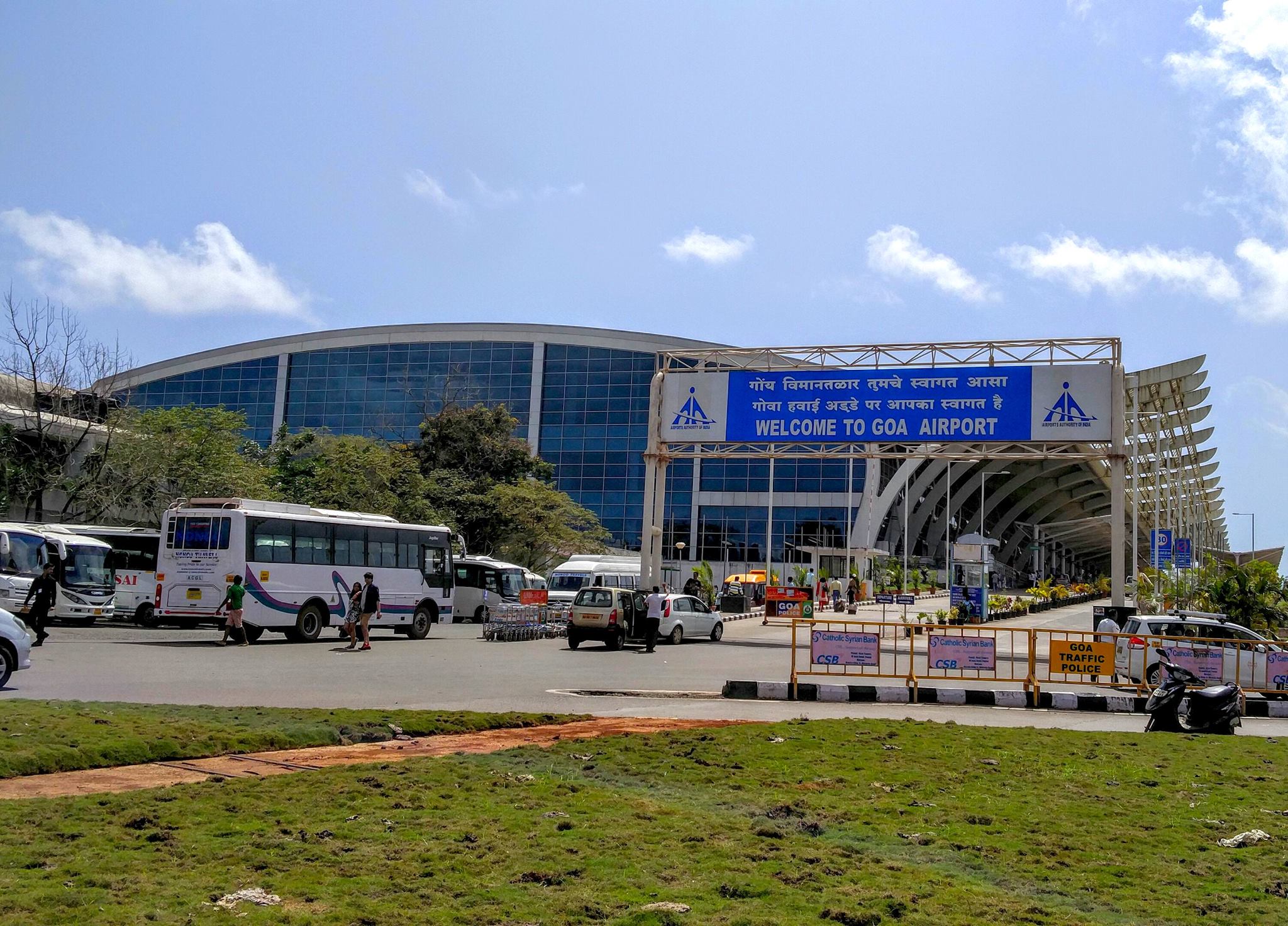A bird for a bird? Say hello to "Robird" that defends airports against bird strikes
Prashant-prabhakar
11 Jun 2022

Collisions between wildlife and aircraft are a common occurrence-one that causes billions of dollars in aircraft damage every year whilst also placing countless human lives at risk.
So what are the international airports at Edmonton and Grand Forks is North Dakota doing about it?
It looks like a bird. Flies like a plane. Or let's just say it's a bird that's a plane - the "Robird"- a robotic bird that closely resembles a Peregrine falcon in this case, looks so strikingly real to its real-life counterpart, but it's not.
Dronelife
Robirds are basically robotic birds that closely resemble natural birds, both in appearance and in-flight behaviour-they fly by beating their wings, can soar, and have speed and wing frequencies similar to a real bird.
The Peregrine "Robird" here, soars near the runway at Edmonton and Grand Forks to deter birds from interfering with air traffic.
Featuring wings that flap, it flies as swiftly as a falcon and can clock speeds up to 27 miles per hour.
Bird strikes are dictated by the seasonal changes in migratory patterns and the risk of bird strikes increases as more airplanes take to the skies.
This novel drone-a ornithopter, that mimics the look and actions of the predatory bird, is produced by Aerium Analytics, a multi-disciplined drone solutions company based in Calgary, Alberta.
Since its inception in 2016, and what began as using drones for forestry, energy, mining and logistics, the company is now focussing on harnessing the power of aerial data for environmental good.
It’s all about the data. Drones can collect vast sums of high quality geospatial data in a fraction of the time it would take to do it manuallySays Aerium CEO Jordan Cicoria
Jordan Cicoria | Unmanned Systems Canada
After having expanded its fleet of drones, the company has now developed artificial intelligence-powered detection and analysis software and a simplified visualization portal. The collected data is taken and rapidly translated into useful visual information for decision-makers in highly regulated industries such as airports and mining.
Aerium’s use cases at airports include real-time detection of foreign object debris (FOD), runway markings inspections and perimeter security.
According to Cicoria, conventional methods of bird deterrents, such as pyrotechnics, air cannons and loudspeakers had minimal effect and had negative environmental impacts as well.
Facts and figures show that RoBird’s impacts have been significant.
Up to an 80% reduction in bird strikes over a year has been reported by Aerium's partner airports.
RoBird works because the Peregrine falcon is one of the most feared aerial predators in the world. It is known on six of the seven continents. Nearly every flocking bird species has been predated on by PeregrinesCicoria said
https://www.youtube.com/watch?v=MWaCfbQyDHU
Apparently, Aerium's pilots fly them manually around the world in places ranging from high visibility airports in the U.S. and Canada to blueberry farms in the Netherlands and dredging operations in Kazakhstan.
The company eventually plans to have full autonomous flocks-in-a-box, with onboard detect-and-avoid and integrated wildlife detection sensors.
RoBird is a perfect example of the evolution of drone technology which looks at what nature does incredibly well and finds ways to replicate. The integration of drones in our daily lives will occur when they make work and life safer and benefit the world. RoBird does just thatCicoria
He likes to think of it as a perfect bird-strike mitigation and wildlife management tool and refers to it as a “sheepdog in the sky.”
SOURCE(s)
COVER: TechCrunch
Read next
AAI to get navigation radio equipment for 24 airports from a Russian firm
Radhika Bansal
11 Jun 2022
Russia’s Scientific and Production Corporation “Radio technical Systems” (NPO “RTS”) signed a large-scale contract with the Airports Authority of India (AAI) for the supply of radio equipment.
The Russian company will manufacture 34 sets of instrument landing system ILS 734 for the modernization of 24 airports in the country.
The domestic manufacturer received the right to conclude a contract based on the results of a global tender, in which, in addition to NPO “RTS”, the world's largest suppliers of radio equipment took part, according to an official statement.
AAI to get navigation radio equipment for 24 airports from a Russian firm
The increased interest of leading manufacturers in the competition is due to the scale of the project: this lot for the purchase of landing systems has become the largest in the world over the past few years.
According to the contract, the first part of landing systems ILS 734 is scheduled to be shipped before November of this year. Payments for the transaction will be carried out in national currencies.
“The contract between NPO “RTS” and AAI has become a breakthrough for Russian business in the highly competitive market of ground-based radio equipment in India. There is no doubt that the successful execution of the contract will open up new opportunities for the implementation of joint projects to modernize Indian airport infrastructure."Denis Alipov, Ambassador of Russia to India
The system allows for the landing of equipped aircraft with a runway visual range of a minimum of 50 meters and a decision height of a minimum of 15 meters. The landing system is subject to increased requirements for the reliability and stability of the output parameters of the equipment.
Scientific and Production Corporation “Radio technical Systems” (NPO “RTS”) was established in May 2003 by a group of developers of landing, navigation and air traffic control systems equipment.
“NPO “RTS” has established itself as a reliable partner, having implemented dozens of projects for the supply of ground-based radio equipment both in Russia and abroad.Customers highly appreciate capabilities of our products, including the instrumental landing system ILS 734, which meets the strictest international requirements and standards, high efficiency in the fulfilment of contractual obligations, high-quality warranty and after-sales service.”Aleksandr Dolmatov, CEO, NPO “RTS”
Today, the enterprise fulfils orders of the Federal Air Transport Agency, the Ministry of Defense of the Russian Federation, the Aviation Base of the Federal Security Service of the Russian Federation and Roscosmos enterprises. NPO “RTS” cooperates with many airports in Russia and CIS countries.
The Airports Authority of India (AAI) manages 137 airports, including 24 international airports. AAI also provides air traffic control services throughout the airspace of India and adjacent ocean areas.
Read next
Air India Express plans massive international expansion in the next 5 years
Radhika Bansal
11 Jun 2022
Air India Express is eying more international connections from second and third-tier cities in India as part of a “huge” expansion plan over the next five years.
Chief of Commercial Tara Naidu said the LCC intends to rapidly grow its network under new owner Tata Group, maintaining its strategy of offering inter-regional routes within a six-hour stage length.
Speaking at Routes Asia 2022 in Da Nang, Vietnam, Naidu outlined 30 countries that are being explored by Air India Express, including Cambodia, China, Indonesia, the Philippines, Turkey and Vietnam.
Air India Express plans massive international expansion in the next 5 years
“There are some markets where there is no direct connectivity, which is strange because they are huge markets,” she said. “We believe it’s going to be a win-win for us—it will stimulate tourism growth in both directions and ease business connectivity.”
Air India Express currently serves 19 destinations in India and 14 international points, with aircraft bases at Cochin (COK), Delhi (DEL), Kozhikode (CCJ), Mangalore (IXE), Mumbai (BOM), Thiruvananthapuram (TVR) and Tiruchchirappalli (TRZ).
Unlike its parent Air India, which operates a hub-and-spoke network, Air India Express flies high-density point-to-point routes, targeting markets with large flows of migrant workers, as well as VFR and leisure traffic. Dubai, Sharjah and Muscat are among its largest international destinations by capacity.
Air India Express flies high-density point-to-point routes from Indian cities to places like Dubai, Sharjah, and Muscat
Naidu said Air India Express hopes to add more aircraft shortly to its current fleet of 24 Boeing 737-800s. She added that it also wants to implement new interline and codeshare agreements with other carriers.
“This will give us additional market reach and access to market segments we wouldn’t have otherwise,” Naidu explained.
Tata completed the acquisition of the Air India group from India’s government in January and in April began the process of consolidating Air India with domestic carrier AirAsia India.
Air India Express hopes to add more aircraft shortly to its current fleet of 24 Boeing 737-800s
Air India Express is a wholly-owned low-cost subsidiary of Air India. The carrier, which was established in 2004, operates a network that covers domestic destinations in India as well as international destinations in Asia and the Middle East.
ALSO READ - Air India intends to purchase a 100% stake in AirAsia India; Tatas to relocate all 4 airlines to Gurgaon
In April, Air India sought approval from the Competition Commission of India (CCI) to acquire the Bengaluru-based AirAsia India, in which the Tatas have a majority stake at 83.67%.
While there have been no formal announcements, the merger – if and when that happens – is speculated to support Air India Express in furthering its future ambitions for regional expansion.
(With Inputs from Routesonline)
Read next
American Airlines and IndiGo have launched a codeshare agreement that allows the former to sell seats on the latter's flights operating on Delhi-Bengaluru and Delhi-Mumbai routes, a statement said on Thursday, June 9.
ALSO READ - Codeshare agreement signed between IndiGo and American Airlines
"American and IndiGo plan to expand the codeshare shortly to include more than a dozen additional destinations in India (in addition to Bengaluru and Mumbai)," it said.
IndiGo officially launches codeshare agreement with American Airlines
American Airlines currently operates flights on the New York-Delhi route only. American Airlines and IndiGo had in September 2021 announced that they are entering into a codeshare agreement.
The agreement will place American’s code on 29 of IndiGo’s domestic routes in India, providing a convenient option for American Airlines customers arriving on the carrier’s new Bengaluru (BLR) and Delhi (DEL), India, flights.
"IndiGo is a premier Indian carrier and through our codeshare agreement, customers can book travel on IndiGo via Delhi to and from two of India's most popular destinations, Bangalore and Mumbai."Anmol Bhargava, Vice President of Global Alliances and Partnerships, American Airlines
The codeshare, which will require U.S. and Indian governments’ approvals, is expected to begin in October, as American Airlines launches a new service between New York (JFK) and DEL on October 31 and between Seattle (SEA) and BLR on January 4, 2022.
“We’re eager to add IndiGo as our trusted partner in India. Whether our customers are traveling for business or pleasure, this new partnership makes it easy to reach all four corners of India. Today we’re adding 29 new routes to our map as a result of this agreement, providing customers with even more options around the globe."Vasu Raja, Chief Revenue Officer, American Airlines
As the codeshare agreement begins, members of American’s AAdvantage® loyalty program will earn miles when traveling on American codeshare flights operated by IndiGo.
Customers who aren’t yet members of the award-winning AAdvantage program can enroll online and enjoy immediate benefits such as Group 6 boarding on flights operated by American.
IndiGo already has codeshare agreements with Qatar Airways, Turkish Airlines and Air France-KLM airlines.
Customers traveling in American’s Flagship® Business cabin on DEL–JFK or BLR–SEA will have access to IndiGo partner lounges in their originating city where they can relax, unwind and enjoy hot food, beverages, Wi-Fi and more.
ALSO READ - Air France-KLM and IndiGo officially launch their codeshare agreement
IndiGo, India's largest airline, already has codeshare agreements with Qatar Airways, Turkish Airlines and Air France-KLM airlines.
ALSO READ - IndiGo and American Airlines announce codeshare agreement| A brief history
Read next
Airports Economic Regulatory Authority (AERA), has hiked Dabolim/Goa International Airport’s aeronautical charges — which are levied on airlines, which accordingly decide airfares — and user development fees (UDF) that are paid directly by flyers.
Now flying out of Goa will be costlier from July 1 till next March and then the air ticket prices will get progressively more expensive every fiscal till April 2025.
AERA hikes Goa Airport's aeronautical charges; tickets get costlier
Coupled with high airfares due to a record high jet fuel prices and a weak rupee, this will mean a costlier trip to one of India’s most loved holiday paradises.
According to the AERA tariff order, the UDF for departing domestic and international passengers will rise from the present INR 301 and INR 604 (taxes extra) respectively to INR 375 and INR 695 from July 1, 2022, to March 31, 2023.
The UDF will be INR 430 (domestic) and INR 760 (international) between April 1, 2023, and March 31, 2024. In FY 24-25, the same will be INR 495 (domestic) and INR 825 (international). And in FY 25-26, the charges will be INR 570 (domestic) and INR 900 (international).
The authority has decided to allow a one-time increase of 30% in domestic and international aircraft parking charges this fiscal starting from July 1, 2022, and an increase by 5% thereafter year-on-year till FY 2025-26.
“Airports Authority of India (AAI) is entitled to recover INR 967.7 crore (from Goa airport). The present value of total projected aeronautical revenues based on the authority’s parking and UDF charges is INR 752.3 crore, resulting in a net shortfall (under-recovery) of INR 215.4 crore. The authority has decided to carry forward the under-recovery of INR 215.4 crore to the fourth control period, with a view to not burden the airport users, who are already suffering from the Covid-19 pandemic’s impact, further with excessive tariffs at this juncture, which shall act counterproductive to the revival of the aviation sector.”Goa airport tariff order, Airports Economic Regulatory Authority (AERA)
The AERA had a tough balancing act as on the one hand are Covid-hit airlines that oppose any further hike in operating costs or UDF to ensure reasonable fares help people return to flights.
And on the other are airport developers who need to sustain operations, and incur Capex amid the sharp drop in footfalls since March 2020. The Federation of Indian Airlines (FIA, which has major Indian carriers as its members) had opposed the proposed hike at Goa.
“It is in the interest of all the stakeholders that the proposed tariffs be reduced to encourage middle-class people to travel by air, which will help in sharp post Covid-19 recovery of the aviation sector.”
"Financial condition during the Covid-19 pandemic has deteriorated to a great extent. The AAI has incurred a loss of INR 1,962 crore in FY 2020-21. It has resorted to borrowing from the market to finance its capital as well as opex (operational expenses). Although it is expected that the aviation sector is likely to bounce back to pre-covid level by FY 2023-24. But for AAI's current survival, it is required to improve cash flows.”Airports Authority of India (AAI)
Goa International Airport, also known as Dabolim Airport, is located in the village of Dabolim in Goa, India. Goa is a popular tourist destination and the airport is served by over 20 scheduled and charter airlines. The airport sees significant international charter traffic in the northern winter from the European airlines.
(With Inputs from The Times of India)
Read next
The Piasecki PA-890-world's first hydrogen-powered helicopter enters the eVTOL bandwagon
Prashant-prabhakar
10 Jun 2022

Frank Piasecki, an American engineer and helicopter aviation pioneer, is best remembered as the father of the tandem-rotor helicopter. He pioneered tandem-rotor helicopter designs and created the compound helicopter concept of vectored thrust using a ducted propeller.
Frank Piasecki | Piasecki Aircraft Corporation
What's new is that two new designs, that borrow from his analysis of automobiles of the 1950s and 1960, may soon see the light of the day and find a place in the emerging civil electric vertical takeoff and landing (eVTOL) and utility unmanned aerial systems military markets.
Piasecki designed and flew the second successful helicopter in the U.S., the PV-2, in 1943 and is also credited with inventing the so-called "Flying Banana"-a tandem-rotor helicopter capable of carrying large cargo loads or troops into combat. Piasecki’s tandem-rotor design laid the groundwork for many of today’s successful helicopters, including the Boeing CH-47 Chinook.
The PA-890 eVTOL aircraft
VEA Aviation PA-890 | eVTOL news
Designed for a variety of missions including Emergency Medical Services (EMS), delivery of high-value On-Demand Logistics (ODL), On-Demand Mobility (ODM) personnel air transport; and many others, the PA-890 eVTOL aircraft is an all-electric-powered Slowed-Rotor Winged Compound helicopter.
The eVTOL features a large four-bladed main rotor, a variable incidence wing that rotates up to 90 degrees to minimize download for efficient hovering and swivelling tail rotor that provides anti-torque and yaw control. As the PA-890 transitions to forward flight the wing rotates to a horizontal position providing lift to offload the rotor and the tail rotor swivels to provide efficient forward propulsion. With lift and thrust demands on the rotor relieved, the rotor RPM is slowed. The combined effect is a dramatic increase in efficiency and range while decreasing noise.
The fuselage is touted to be made using a variety of materials, including carbon fibre.
There are a lot of novel eVTOL configurations proposed out there that will require the development of a new FAA certification basis. This represents a significant risk. We are able to meet our design objectives with a compound helicopter that can be certified under existing Part 27 conventional helicopter standards. So, given the lower risk of the certification process and the simplicity of the design, in our minds, it reduces costs both in terms of acquisition and operations” by using a design that more closely parallels that of a conventional helicopter, albeit a compound oneJohn Piasecki- the company CEO, said
The aircraft features seating for five and a large baggage compartment with multiple configurations for cabin size and layout.
It has been designed for FAA certification under existing Part 27 standards, reducing the technical, cost and schedule risk of bringing this product to the commercial market relative to more novel configurations requiring a unique certification basis.
According to John, electric motors are very easily operated at different RPMs and hence Electric Propulsion makes it demonstrably easier to control main rotor speed and achieve noise reduction. He further added that the company rejected a battery-only electric design based on performance and a hybrid propulsion system based on cost, given the low associated energy density and limited life cycles.
Hybrid turned out to be excellent from a performance and cost point of view, but it still had a residual carbon footprint. Hydrogen fuel cells offered double the cost-saving and have zero carbon footprintJohn
Currently, various hydrogen supply scenarios for the PA-890 are being explored. Piasecki signed an agreement with California-based HyPoint to collaborate on the development of turbo air-cooled, high-temperature hydrogen fuel cell systems, last August.
HyPoint and Piasecki Aircraft announce collaboration for the development of Hydrogen Fuel Cell System | Representative | TransportUP
The company hopes to have a prototype flying in the 2024-2025 timeframe and is targeting certification for 2027.Once we get economies of scale, the fuel cell cost is going to come way down. The target for overhauls of the PA-890's fuel system is up to 20,000 hoursSaid John
https://www.youtube.com/watch?v=fH8Qqvcy524
As for the specific industrialization strategies for the PA-890, they are still under discussion.
SOURCE(s)
COVER: ainonline




Comment